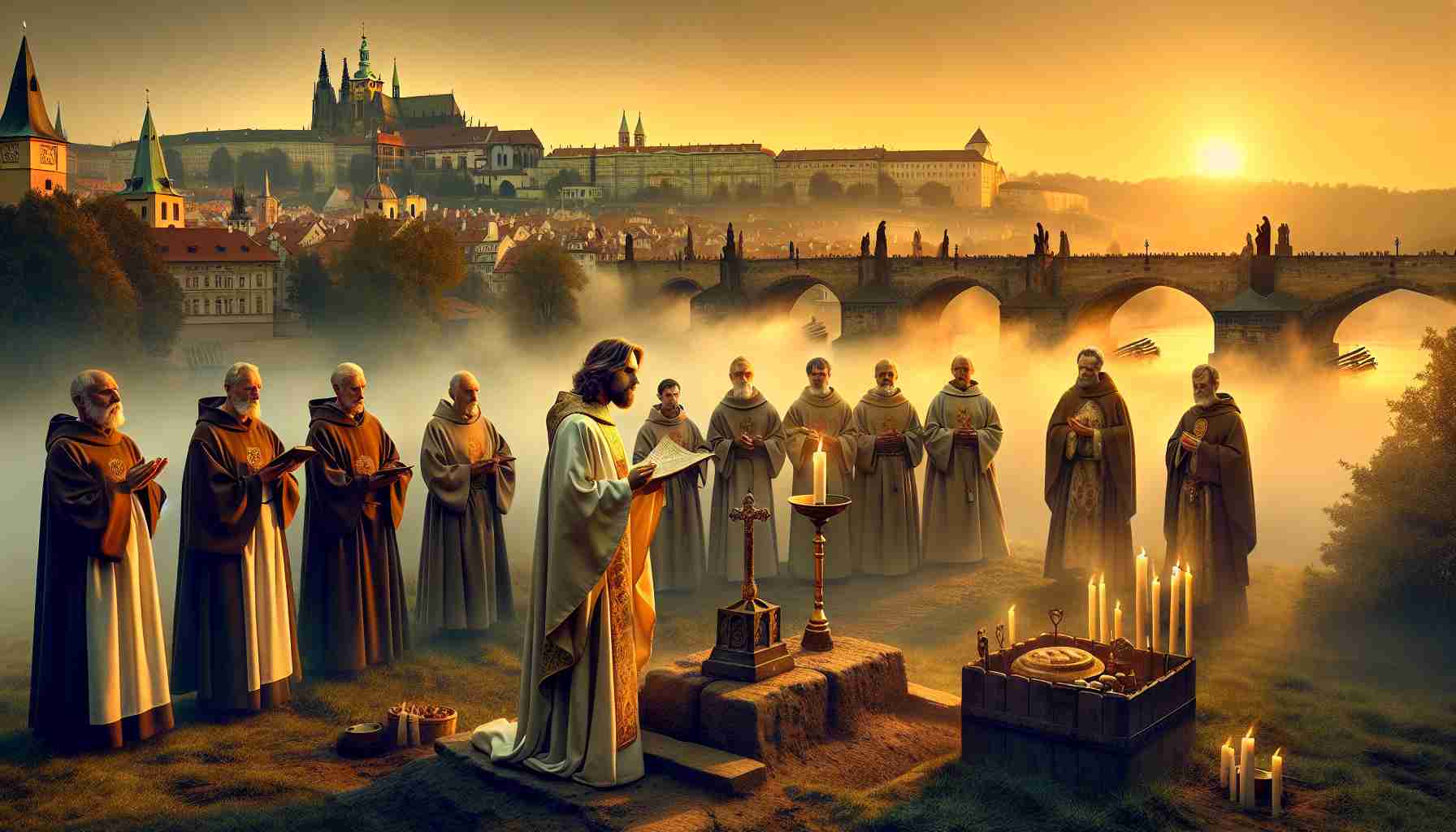

Mist clung to the Vltava River like a whispered breath from the heavens. On the banks of Prague, where the river cleaved the city’s soul in two, bells rang through the morning stillness. July 9, 1357—the day chosen not by whim but by divine numerology—year, month, day, hour: 1357, 7:9, 5:31. Emperor Charles IV had insisted upon this alignment, believing it to be sacred, a ladder of ascending and descending odd numbers that mirrored the divine order of creation.
Before the clergy's feet met the ground, prayers echoed across the river like incense, curling above the murmuring waters. Cloaks whipped in the breeze as monks, nobility, and masons gathered, surrounding a muddy trench and the first foundation stone—blessed, then anointed with holy oil. The emperor himself stepped forward, his breath slow, his eyes raised not to human glory, but to heaven.
He spoke no lofty edicts, only Scripture from the Apostle Paul ringing through the cold morning: “For no one can lay any foundation other than the one already laid, which is Jesus Christ.” The priests crossed themselves. The masons lowered their tools. Charles knelt, pressing his gloved hand to the ancient stone beneath Holy Cross Hill, staking not just his kingdom’s wealth, but its soul into earth and testimony.
The bridge would take decades. Yet this morning, the first stone split silence with eternal intention.
The old Judith Bridge had crumbled decades before—drowned and beaten by a flood whose rage had seemed apocalyptic. Travelers were stranded. Merchants rerouted. Pilgrims wept when they could no longer cross to the cathedral of Saint Vitus on the eastern bank. That cathedral—still rising itself from its Gothic bones—beckoned like a flame behind stone tracery and flying buttresses. Some whispered that saints walked its halls after dark. Others claimed the tomb of Wenceslas glowed with otherworldly light beneath its vault.
To Emperor Charles IV, restoring Prague’s bridge was not civic vanity—it was penance and petition. Born under turbulent signs and exiled as a boy, he had returned to Bohemia not only to claim a throne, but to reforge a Christian kingdom from chaos and ruin. This bridge, he believed, would be sacred ground—linking temporal and spiritual realms in one spans-long testament.
So the masons carved. Stones came from quarries long used by saints and kings. Mortar bonded not only by lime and river sand, but—legend swore—by eggs collected from every village in the land. Orders had gone forth: contribute yolks and shells, for the bridge must not break. Some tales said whole wheels of cheese had arrived instead, peasants mistaking the command—but the stones endured.
Years passed. The sun shifted on the statues lining the balustrade—saints in silent prayer, martyrs mid-miracle. Each figure bore meaning beyond its marble: Saint John of Nepomuk stood shackled upon the parapet, hands folded, eyes downcast. They would one day toss his body into these same waters for refusing to betray a queen’s confession. His statue would mark the spot. Touch it, they would whisper, and make a wish.
On feast days, the bridge vanished beneath pilgrims’ feet—children and beggars, nobles and monks crossing to light candles in the cathedral. Some came barefoot, others sang psalms as they climbed the eastern bank, where incense and bells mingled like sun and smoke above the plaza.
Even the storms could not erase it. River ice clawed at its piers. Occupying armies clattered across its stones. Still it stood—grey, imperfect, resolute. Over centuries, kings passed and wars bled across Europe, but the bridge remained—a sacred spine holding Prague aloft in time.
Its arches, they said, whispered sermons. Look long enough, and you’d feel in the rhythm of stone a deeper pulse—sermons of endurance, of faith set in granite. No man may lay a foundation but Christ, and yet here, men had built upon that truth in mortar and prayer.
By the banks where the river once divided, souls were drawn together. Lovers met under the saints’ gaze. Widows brought bread to beggars. Priests sprinkled water on babes who would one day grow old enough to walk the same path their grandfathers had trudged.
No one remembered the name of the mason who placed the final keystone, but they remembered what the bridge carried: centuries of footsteps, burdens, prayers.
And when the sun rose each July 9, light would flood between the towers like the veil torn at the Temple—the city still waking, but the bridge already in prayer.
Prague bore many treasures: jeweled relics, imperial crowns, cathedral vaults echoing with organ thunder. But among them stood this simple, saint-worn bridge—cut from faithful hands, lifted on Scripture, bound with sacrifice.
On its stones, the Gospel had walked.